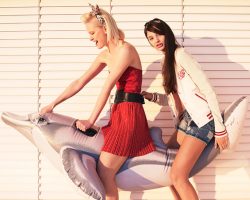Carry your camera in comfort and style with a camera shoulder strap
Camera shoulder strap reviewed and compared. The camera shoulder strap is by far the best way to carry your digital SLR camera. SLR cameras are big, bulky and heavy and carrying one around all day is going to take its toll. If you want to carry your camera around with you all day, totally pain free the camera shoulder strap is the best option.
There are many different brands and models of camera shoulder strap available, but not all of them are worth buying. There are many cheap camera shoulder straps that are made out of inferior materials. A cheap camera shoulder strap will have no padding hence they are uncomfortable and will cut in to your skin, and will last about five minutes. A digital SLR camera is expensive and scrimping on a cheap camera shoulder strap that could break and let your camera hit the deck at any time, is not worth the risk and could end up costing you a lot of money. It is far better to pay a little more on a good quality camera shoulder strap in the first place.
So, what are the best camera shoulder straps? Carry on reading and you will soon find out since this article reviews and compares the top three camera shoulder straps currently available.
Best camera shoulder strap – Cotton Carrier
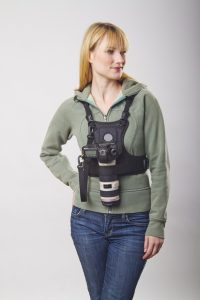
Cotton Carrier Vest System For 1 or 2 Cameras
The Cotton Carrier is a chest carrier that goes over your shoulders, but it isn’t a camera shoulder strap per se. Out of all the camera straps I have owned and used, and I have tried many different types, the Cotton Carrier is the best camera strap ever. The Cotton Carrier camera vest allows you to carry your camera safely on your chest, out of harms way, leaving your hands totally free. The Cotton Carrier can securely hold a fully gripped digital slr camera and large telephoto lens, such as my battery gripped 7d and Canon 100 – 400 lens. With the Cotton Carrier I can carry this heavy set up around with me all day, and totally pain free which is brilliant.
Releasing the camera from the Cotton Carrier is quick and easy, and simply involves twisting the camera and pulling upwards. It is possible to get the camera off the vest and up to your eye in a matter of seconds, which means you will never miss a shot.
The Cotton Carrier isn’t cheap, but it is worth each and every cent. Before I bought my Cotton Carrier I did lots of reading and research and was in two minds, partly because of the cost and partly because I couldn’t find many non-professional reviews about the product. However, I finally bit the bullet and purchased one, and I have never looked back. I only wish I bought one sooner, but then hindsight is a wonderful thing isn’t it.
In my opinion, the Cotton Carrier is the best camera holding system currently available and it is well worth buying, especially if you regularly use heavy camera and lens combinations.
Best Camera shoulder strap – Sun Sniper
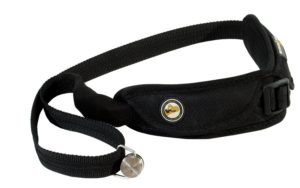
Sunbounce Sun Sniper Strap Pro, Black
The Sun Sniper is the original camera shoulder strap and, even today, it is one of the most popular amongst all types of photographers, and when you get to see and try the Sun Sniper camera shoulder strap you will soon see why.
The Sun Sniper has a wide strap, which means it doesn’t cut in to your torso. I can confirm the Sun Sniper is exceptionally comfortable to wear and use, even with heavy camera/lens combinations. The strap is made out of good quality materials and is tough and durable, which means it is a camera shoulder strap that is built to last.
The camera is attached to the strap using a small ring that is screwed in to the tripod plate screw of the camera. Once the ring is screwed in to the camera it is totally secure and won’t go anywhere. When using the Sun Sniper you can be sure your camera will remain safely attached to your body at all times. The ring on the strap is a loose fit, which means it easily slides along the strap with little effort. When using the Sun Sniper you can get your camera from your waist to your eye in a matter of seconds, so you will never miss a shot.
Compared to other camera shoulder straps the Sun Sniper is priced at the top end, but it is well worth buying. If you want a camera shoulder strap that will provide years of trouble free service the Sun Sniper is the camera strap for you. It really is an excellent product.
Best camera shoulder strap – Black Rapid RS

Black Rapid RS-7 Camera Strap, black
The Black Rapid is another popular camera shoulder strap amongst photographers. The Black Rapid, just like the Sun Sniper, has a wide strap meaning it won’t cut in to your shoulders, which in turn makes it very comfortable to wear. Even with the heaviest camera/lens combinations, the Black Rapid receives a lot of praise from its users. The Black Rapid is also made from top quality materials, that don’t fray, which means it is going to stand the test of time.
The camera is attached to the Black Rapid via the tripod screw, but unlike the Sun Sniper there is a quick release clip. Some photographers rave about the quick release system, however I am not so sure. I always have my doubts over quick release systems and always think they are going to fail. My camera and lenses are worth a lot of money and I would hate to see them hit the deck and break. As such, I steer clear of quick release systems regardless of how good and secure other users claim they are.
Would I recommend the Black Rapid over the Sun Sniper? Since I ended up buying the Sun Sniper I would have to say no, but I did try the Black Rapid camera shoulder strap. As I previously mentioned, I don’t trust quick release clips. In addition to this, I just found the Sun Sniper camera shoulder strap more comfortable with my set up. That said, there are many people that find the Black Rapid more comfortable than the Sun Sniper.
Other shoulder straps for your digital slr camera
In my opinion the Black Rapid, Sun Sniper and Cotton Carrier are the best camera shoulder straps currently available and having owned and use all three I can guarantee you would be happy with either of them. In order to cover ALL situations I recommend having a Cotton Carrier and the Sun sniper or the Black Rapid.
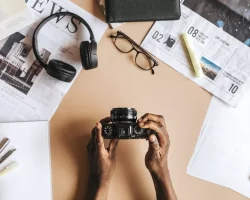

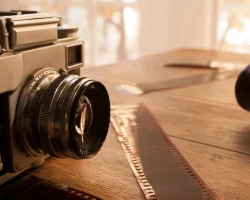
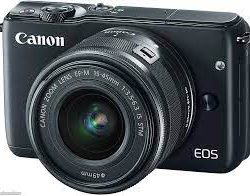
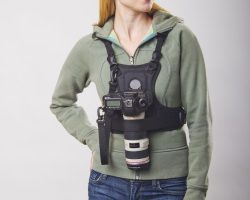



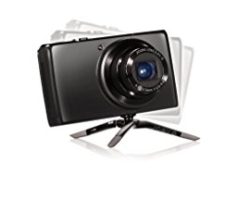

 This latest micro tripod from Joby is designed to stay on the camera at all times, when you fold it down it fits under the camera base.
This latest micro tripod from Joby is designed to stay on the camera at all times, when you fold it down it fits under the camera base.